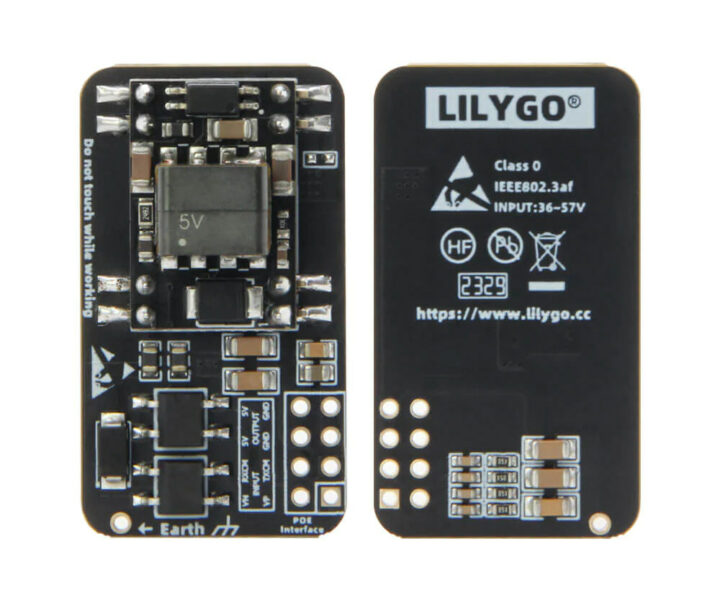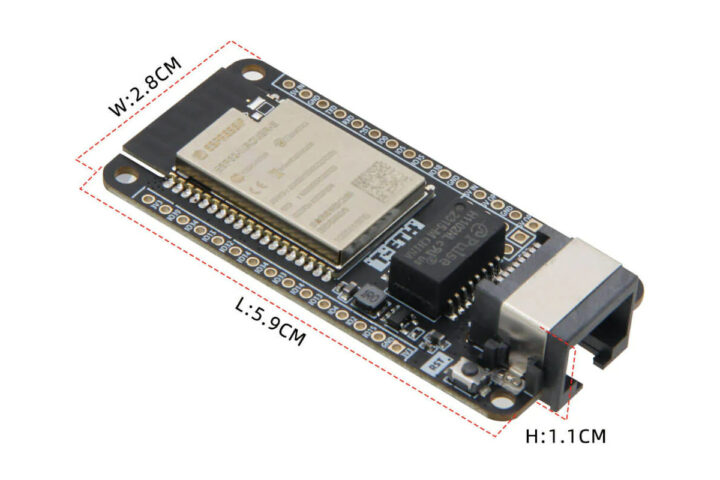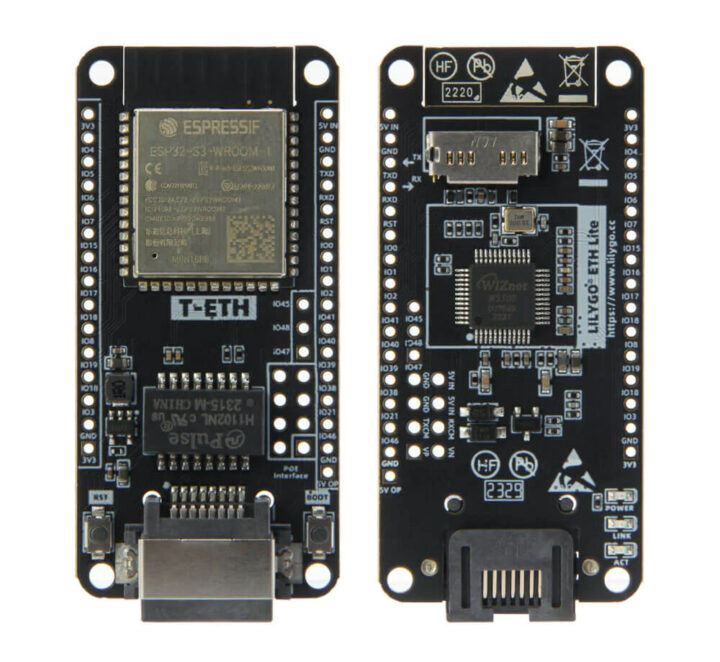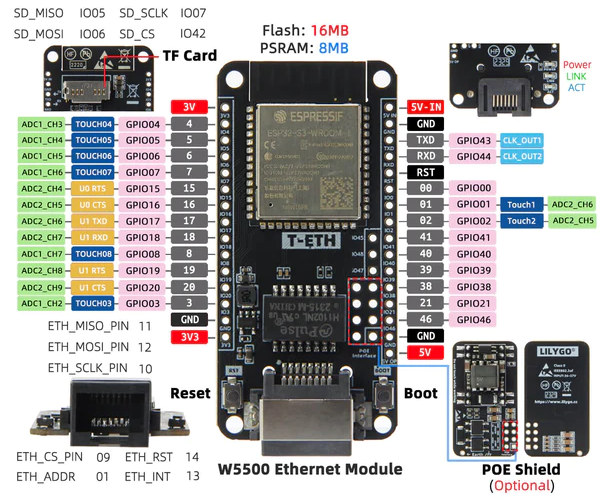LILYGO T-ETH-Lite ESP32-S3 is a new ESP32-S3 WiFi and Bluetooth development board with a low-profile Ethernet RJ45 connector using a WIZnet W5500 Ethernet controller, supporting PoE with an extra shield, and also equipped with a microSD card socket and expansion I/Os.
ESP32-based development boards with Ethernet have been around for years including LILYGO’s own “TTGO T-Lite W5500“, but so far we haven’t many based on the more recent ESP32-S3 microcontroller except for the SB Components’ ESPi board that we covered last April. But LILYGO T-ETH-Lite ESP32-S3 adds another cost-effective board with Ethernet.
LILYGO T-ETH-Lite ESP32-S3 specifications:
- Wireless module ESP32-S3-WROOM-1
- MCU – ESP32-S3 dual-core LX7 microprocessor @ up to 240 MHz with Vector extension for machine learning
- Memory – 8MB PSRAM
- Storage – 16MB SPI flash
- Connectivity – WiFi 4 and Bluetooth 5 with LE/Mesh
- PCB antenna
- Storage – MicroSD card slot
- Connectivity
- 802.11 b/g/n WiFi 4 up to 150 Mbps and Bluetooth 5 via ESP32-S3 SoC
- 10/100M Ethernet via SPI Ethernet board based on WIZnet W5500, optional PoE
- I/Os – 2x 15-pin headers with up to 23x GPIOs, 2x UART, 14x ADC, touch interface, Reset, 5V, 3.3V, GND
- Misc
- Boot & Reset button
- Power, Link, and Act LEDs
- Power Supply
- 5V via “5V-IN” pin
- 36 to 57V via optional PoE shield
- Dimensions – 59 x 28 x 11 mm
LILYGO provides a range of Arduino samples for their T-ETH boards based on ESP32/ESP32-S3 such as web server, OTA firmware updates over Ethernet, MQTT server, SPI and One-wire code, and so on. There’s also a code sample for a camera module designed for the T-ETH Lite ESP32-S3 board, but I’m unable to find that camera module for now. You’ll find the code samples, firmware, and schematics on GitHub. If you have some issues when using the board, you can ask for support in the community forum.

LILYGO is selling the T-ETH-Lite ESP32-S3 board on Aliexpress for $13.98 and a kit with the PoE shield for $25.98. Both are available via the same link along with the earlier ESP32-based board and PoE kit. The camera module is probably coming in the next few weeks.

Jean-Luc started CNX Software in 2010 as a part-time endeavor, before quitting his job as a software engineering manager, and starting to write daily news, and reviews full time later in 2011.
Support CNX Software! Donate via cryptocurrencies, become a Patron on Patreon, or purchase goods on Amazon or Aliexpress







